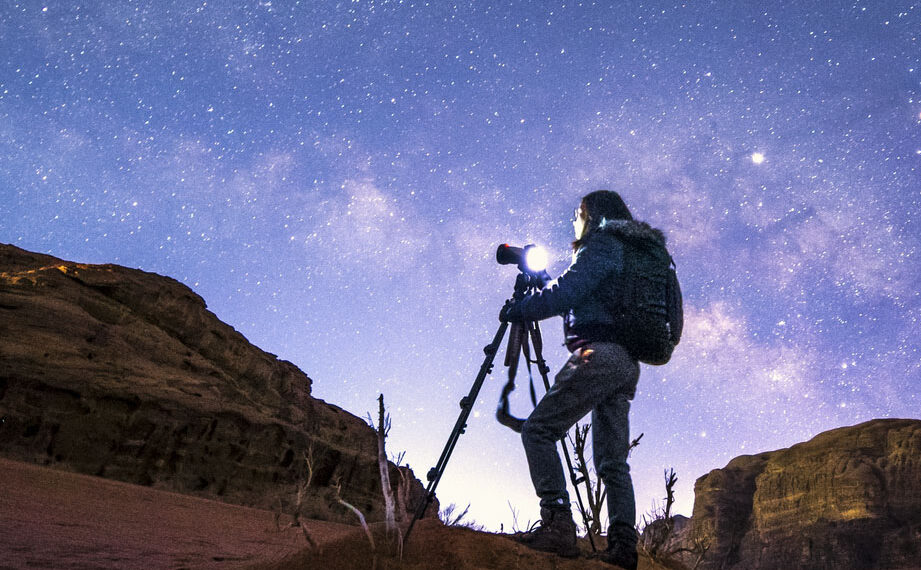
Unlocking the Cosmos: Discovering the Wonders of Astrophotography
Astrophotography, the art of capturing images of celestial objects and the night sky, has become an increasingly popular and fascinating hobby for amateur and professional photographers alike. With advancements in technology, astrophotography has evolved into a mesmerizing blend of science and art, allowing enthusiasts to explore the vast reaches of the cosmos through the lens of a camera. In this article, we delve into the very interesting aspects of astrophotography that make it a captivating and rewarding pursuit.
- The Art of Patience
Astrophotography is a testament to the virtue of patience. Capturing stunning images of the night sky often requires long exposure times, sometimes lasting for several minutes or even hours. This patience is not only essential for obtaining clear and detailed images but also for waiting for the perfect conditions, free from light pollution and atmospheric disturbances.
- Gear Galore
Astrophotography demands specialized equipment that goes beyond the typical camera setup. Astrophotographers invest in telescopes, equatorial mounts, and dedicated astrophotography cameras to capture distant galaxies and nebulae. This gear can be complex and requires a good understanding of the equipment to achieve optimal results.
- Chasing Darkness
One of the primary challenges in astrophotography is finding locations free from light pollution. Astrophotographers often embark on journeys to remote areas, far from city lights, to capture the beauty of the night sky without interference. The quest for darkness takes them to deserts, mountains, and other secluded spots, turning astrophotography into a thrilling adventure.
- The Dance of the Planets
Astrophotography provides a unique opportunity to witness and capture rare celestial events. The alignment of planets, meteor showers, and eclipses becomes a spectacle through the lens of an astrophotographer. These moments, which might be missed by the naked eye, are preserved forever in the stunning images captured during these cosmic dances.
- Image Processing Wizardry
The raw images obtained through astrophotography are often a far cry from the vibrant and detailed final results. Post-processing plays a crucial role, involving techniques like stacking multiple images to reduce noise, adjusting color balances, and enhancing details. Astrophotographers become adept at using software tools to bring out the hidden beauty of their captures.
- Hunting Deep-Sky Objects
Astrophotography opens up a realm of exploration beyond our solar system. Enthusiasts often target deep-sky objects such as galaxies, nebulae, and star clusters. The challenge lies not only in locating these faint objects in the vastness of space but also in capturing their intricate details and colors.
- Star Trails
Creating mesmerizing star trail images is another fascinating aspect of astrophotography. By leaving the camera’s shutter open for an extended period, photographers capture the apparent motion of the stars across the night sky. These images not only showcase the Earth’s rotation but also reveal the beauty of the stars as they paint trails of light against the darkness.
- Time-Lapse Chronicles
Astrophotography lends itself well to time-lapse photography, allowing photographers to compress hours of celestial movement into short, captivating videos. Time-lapse sequences of the night sky, including the rising and setting of the Milky Way, eclipses, and lunar phases, provide a unique perspective on the dynamic nature of the cosmos.
- Astrophotography Communities
The astrophotography community is a vibrant and supportive network of enthusiasts who share their experiences, knowledge, and breathtaking images. Online forums, social media groups, and local clubs provide a platform for astrophotographers to connect, learn, and inspire each other. This sense of community adds a social dimension to the solitary act of stargazing and image capturing.
- Educational Outreach
Astrophotography serves not only as a personal passion but also as a powerful tool for education and outreach. Photographers often collaborate with schools, science centers, and astronomy clubs to share their knowledge and images. These outreach efforts contribute to the public’s understanding of the cosmos and inspire the next generation of astronomers and astrophotographers.
Conclusion
Astrophotography is a mesmerizing blend of science, art, and adventure. It challenges enthusiasts to explore the cosmos, requires patience and dedication, and rewards them with stunning images that capture the beauty of the night sky. As technology continues to advance, astrophotography is likely to become even more accessible, allowing more people to unlock the secrets of the universe through the lens of a camera. Whether you’re a seasoned astrophotographer or a curious beginner, the wonders of the cosmos are waiting to be discovered, one long exposure at a time.



